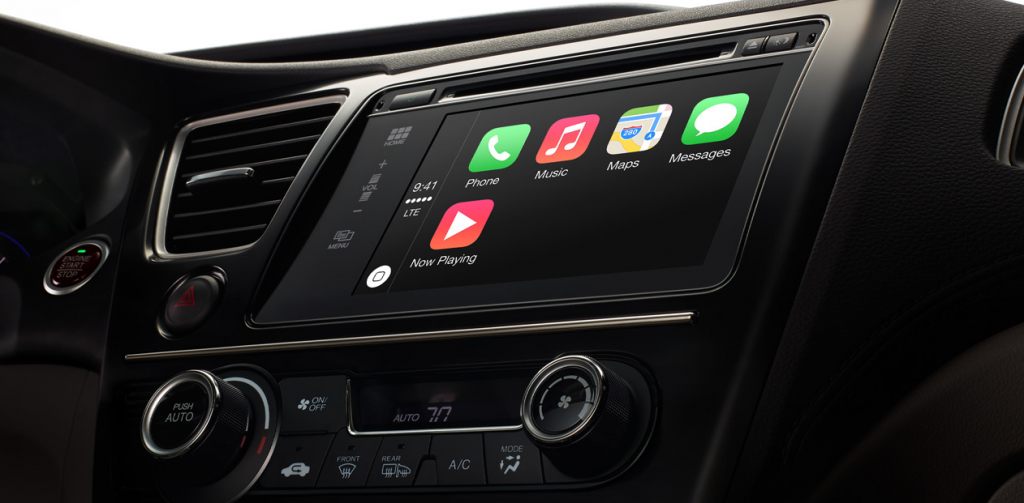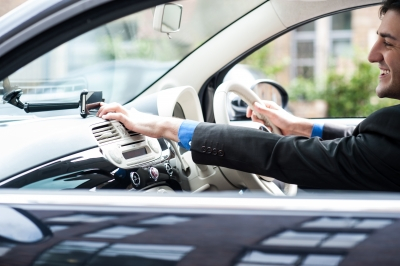How Will Mobile Tech Partnerships Shift The Automotive Market?
Connected Car and the Dealership:
The era of connected cars is officially well underway. Automotive and technology giants recently announced substantial partnerships that will pave the future of cars and technology.
Apple announced CarPlay, bringing its brand new in-car infotainment system to Honda, Mercedes, Volvo, Hyundai and Jaguar as well as a dozen committed partnerships from some of the largest manufactures in the automotive sphere.
Google recently announced partnerships with GM, Audi, and Hyundai. Ford’s relationship with Microsoft revs up the continued adaptation of in-car apps with Microsoft’s SYNC system now in over 8 million vehicles. The merge of technology and automobiles makes sense on many levels, but future control of the connected car lies in the balance.
Mobile technology platforms have widespread audiences that cover large demographics. For many consumers the choice is one of two mobile operating systems; Apple or Android. Automobiles are a different story. 35+ unique brands exist in the US alone and different automotive platforms and model offerings create even greater segmented audiences.
What will technology’s impact be on automotive brand loyalty?
Drawing A Divide:
An automaker’s decision in a technology partner is a crucial one. With more and more buyers basing purchasing decisions on automotive technology rather than traditional features, control of in-car tech has serious future value. Thirty-nine percent of car buyers today rate in-vehicle technology as the top selling point. The importance of the connected car is gaining some serious traction.
Technology preference can be a hindrance to brand loyal buyers. A buyer traditionally loyal to Audi’s product line may be an avid iPhone user. Audi’s partnership with Android may force that buyer to make a choice between technology and automotive preference.
A consumer's mobile device is a highly personal item, connecting the consumer to their digital lives. Mobile devices spend huge amounts of time with the consumer - 2 hours being spent on apps alone daily . On the flip side, the automobile remains the primary transportation hub for consumers. The average American spends 2.5hrs a day traveling by car.
Automotive Experience:
One of the largest “benefits” seen from these partnerships is the unlocking of new connected experience opportunities between consumers and their vehicles. While the level of interaction involved with automobiles and mobile technology are equally high, buyer demographics show distinctly different motivations. Millenials interact with their cars because they have to and interact with their phones because they want to. The connection they have with their smartphone is more readily apparent than those they have with their vehicles.
The implementation of mobile apps into vehicle infotainment systems is an example of the connected car experience merging with personal mobile devices. While the pathway of connected cars is already largely adopted, the question becomes how will automotive and tech companies divvy up the control of the in-car experience?
Experience, Keeping it Fresh:
One of the largest considerations for OEMs is to build or partner. In-car technology is quickly becoming a larger part of the purchase decision. With technology’s constant push forward, implementation of established mobile platforms into vehicles makes for an interesting case study. Over the past 10 years, the average vehicle's lifespan has risen from 5.7yrs to 11yrs. In today’s world a car’s interface technology can be a contributing factor in the lifespan of a vehicle. Even systems a few years old can feel clunky, outdated, and lack significant features of newer models.
One of the arguments for OEM partnership with established technology giants is centered around hardware and upgrade roadmaps. Android and Apple’s torrid innovation pace breathes new life into their mobile hardware even when that hardware is a few generations old. As we saw with the recent iOS 7 update, the upgrade path included older iPhone 4, 4S, and iPhone 5 models.
With small exceptions the older hardware was able to perform many of the features of current gen tech. This model has beneficial implications for automotive manufacturers who require vehicle lifespans to extend beyond a few years. Partnership with Apple or Google allows manufacturers to update older generation connected car systems – keeping the experience fresh and extending vehicle lifespans. For manufacturers this helps devalue the importance of predicting where technology will be 5 years down the road.
Control, Who Gets It:
For manufacturers, concern centers around branding and control. Permitting tech companies to control the “connected experience” of the automobile has the potential to dilute automotive brand value. With more and more of customer’s automotive experience coming from in-car technology, brand differentiation needs to be weighed carefully.
Additionally, automakers stand potential losses from higher margin “tech packages.” Bluetooth, Navigation, and in-car concierge services have been traditionally represented by checkboxes on the options sheet. With iOS in the Car or Android’s new take on automotive technology, many of these features are inclusive. Implementing a more widespread mobile medium into a manufacturer model line risks loss of important margins.
In summary, while similar platforms across automobiles has beneficial aspects, manufacturers risk losing control of the connected car experience. Smartphone connectivity in vehicles will alter the way in which your customer interacts with your dealership. While today’s dealer app includes the ability to schedule service on a smartphone, consider the value of that app on the customer’s digital dashboard. App specific features such as Location Targeting are enhanced when connected to the car.
Consider this example: Mary is running errands on a typical Saturday. She visits a quicklube store near her dealership. She is alerted through her car that the nearby dealership has delivered an oil change special. She engages with the coupon in her car, sees an opening at 2pm, schedules the appointment, and receives directions to the dealer. This is targeted messaging delivered at the moment of decision! Location Targeting, through an app, connected with the car.
The automotive experience is shifting to a mobile focus. Smartphone integration across all aspects of the automotive economy is changing not only the vehicles themselves but they ways in which we shop, own and experience them.
- How will your dealership utilize the connected car experience to drive more service revenue?
- When your customer thinks service, will your dealer be present on their digital dashboard?
- How will the connected car automate scheduling a service appointment with your dealer?
- What other examples would you like to see become a reality with location targeting?
By Ben Anderson , Josh Knutson ,
http://www.automotiontv.com/how-will-mobile-tech-partnerships-shift...
© 2025 Created by DealerELITE.
Powered by
![]()



You need to be a member of DealerELITE.net to add comments!
Join DealerELITE.net